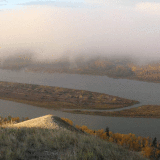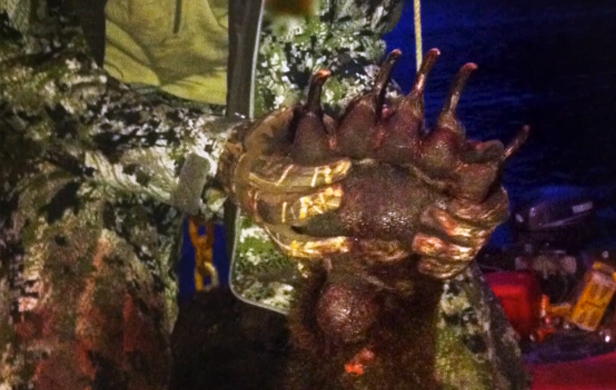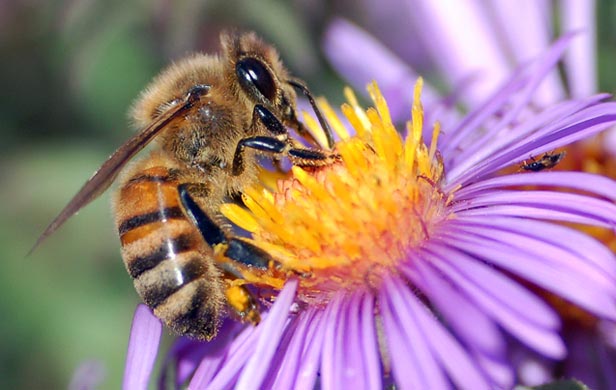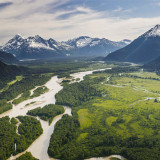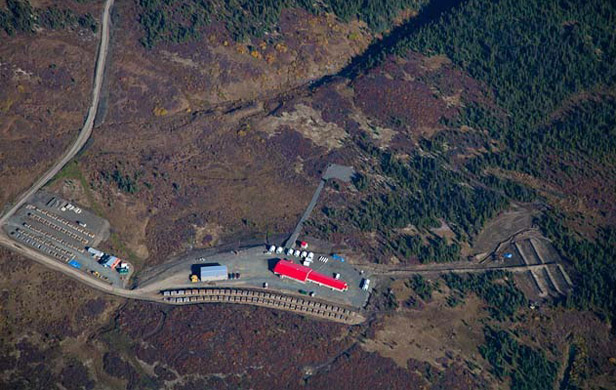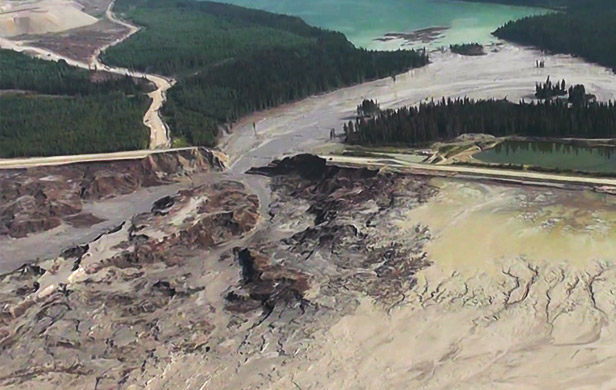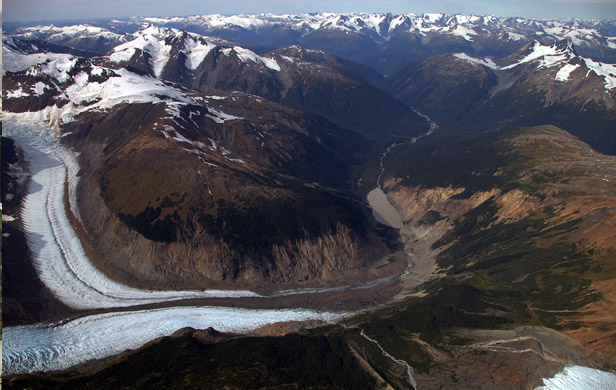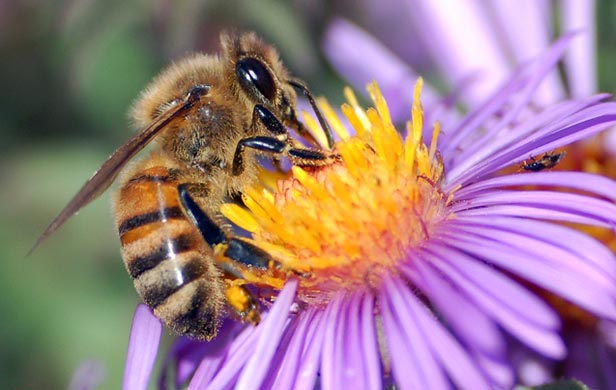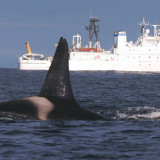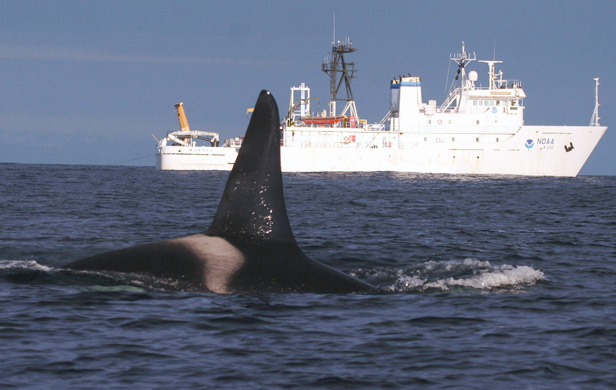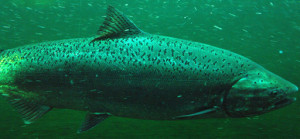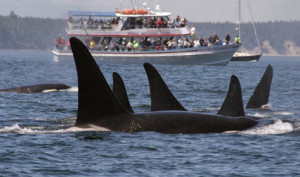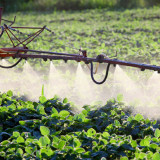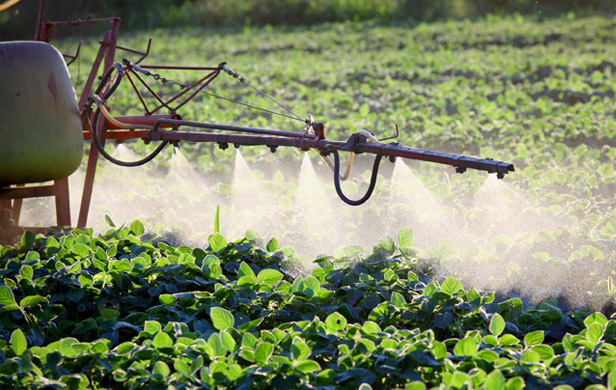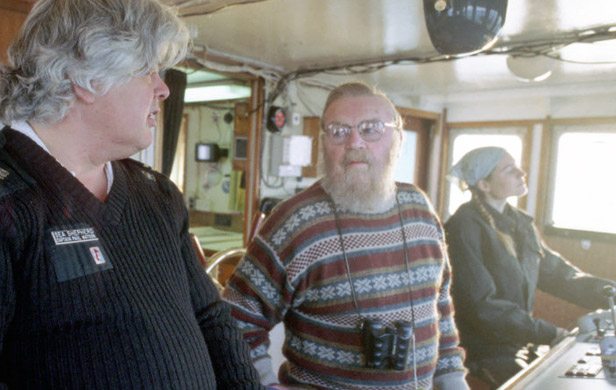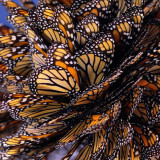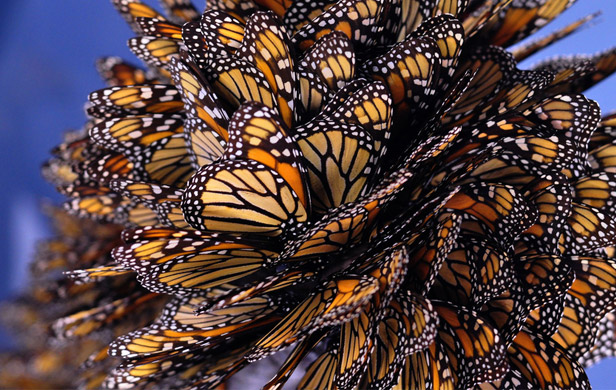
BC Hydro’s clearcut logging this past weekend at the location of the proposed Site C Dam appears to have broken a promise about care for active eagles’ nests and may have lacked federal permits, critics charge.
See no eagle, hear no eagle
The work came within days of the Union of BC Municipalities’ (UBCM) call for a halt to Site C Dam construction until proper independent reviews have been conducted. While Hydro has provincial permits to cut down eagles’ nests on islands in the Peace River, spokesperson Dave Conway has stated it would “take great care to avoid or mitigate effects on active bald eagle nests during Site C construction.”
Yet, based on evidence captured and provided by local photographer Donald Hoffmann, an apparently active eagle’s nest was cut down over the weekend.
A statement issued by Hydro on “protecting” eagles said the following:
[quote]What does inactive mean? Inactive means the nest is no longer being occupied by a bird or an egg.[/quote]
Yet an eagle was still clearly seen occupying the nest as of Friday, September 25 (pictured below with machinery operating behind the nest). By Monday, the nest, along with every tree on the island, was gone.
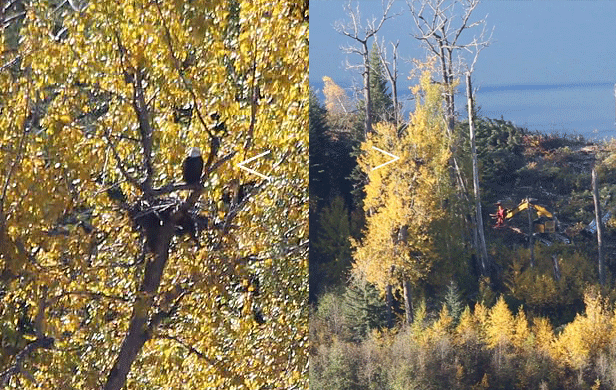
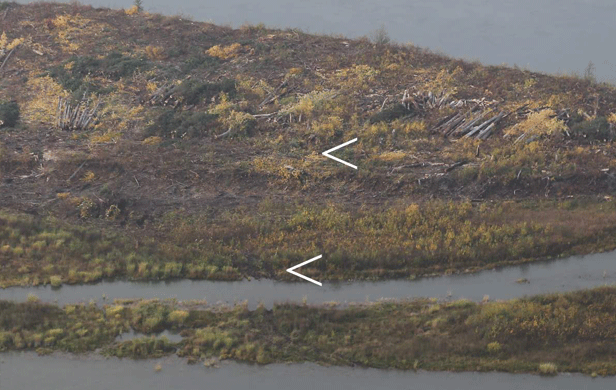
Not only was Hydro to leave active nests in place, but it promised “300-metre no activity buffers will be implemented around active bald eagle nests”. The above photo clearly shows a feller buncher machine working in far closer proximity to a nest with an eagle sitting in it.
Conway confirmed in comments emailed to the Alaska Highway News that the nest was removed, but maintained that “a qualified environmental professional was on-site to determine the nest was inactive, and no eagles were present or harmed in the process.” How the “qualified environmental professional” missed the eagle captured in photographs by Hoffmann is a unclear.
Hydro may have lacked permits
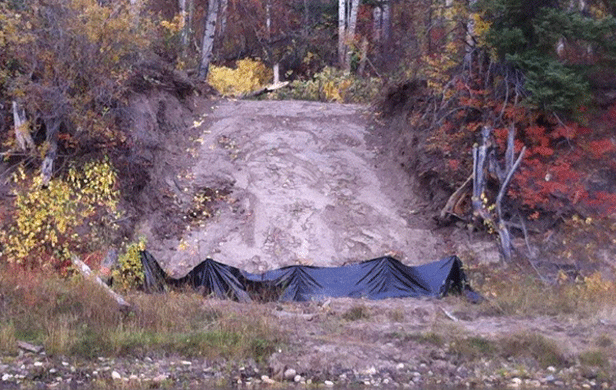
Ken Boon of the Peace Valley Landowners’ Association was partaking in a wooden boat race on the river this past Saturday when he learned of Hydro’s construction work on the island – where he ventured to see it for himself. He is concerned that BC Hydro moved equipment across a side channel in the river without proper permits.
“Two pieces of logging equipment were moved to the island by crossing the river during the best low water conditions possible, in co-ordination with the Peace Canyon Generating Station,” Conway told the Alaska Highway News. “This was done in accordance with our provincial permits, and an environmental monitor was on site.” Boon counters, “That may be so, but to our knowledge, there are no federal permits issued that would allow for the crossing of a main river channel with that equipment.”
This notion is backed up by lands staff for the Treaty 8 Tribal Association, who told me yesterday that Hydro acknowledged during recent injunction proceedings Hydro that it did not have the necessary federal permits to impact a fish-bearing river.
Hydro’s poor track record
“This incident highlights again the fact that BC Hydro, as a public crown corporation, cannot be trusted to be doing self-monitoring and self-reporting,” adds Verena Hofmann, a Peace Valley resident working with Treaty 8 on Site C-related issues.
She points to Hydro’s poor track record with environmental studies. The crown corporation committed a series of missteps throughout its filed studies and investigative work leading up to the Join Review Panel hearings – including “archeology infractions that resulted in an RCMP investigation, improper sampling methods, test holes that were too shallow and had to be redone, and improper baiting for wildlife studies.”
In each of these instances, Treaty 8 members had to intervene and insist of problems being addressed, maintains Hofmann. “We’ve seen that it’s BC’s practice to allow industry to police itself, but Hydro does not have the same deal with the federal government. Where are the federal agencies whose responsibility it is to monitor fish habitat and fish-bearing watercourses?”
Early signs of Site C’s disruption
From further west on the Peace River comes this account from homeowner Caroline Beam:
[quote]A bald eagle was hit on the highway near our riverside home outside Hudson’s Hope a few days ago. My husband came upon the scene as the driver was trying to figure out how to capture and contain the obviously injured bird. He was attempting to use a coat, which my husband explained to him would not be adequate for safely containing such a large, strong and well-armed bird. My husband then called the local RCMP, who asked him to retrieve a large animal crate from our home and meet him at the scene to try to capture the bird properly, after which it would be transported to a facility in the lower mainland. If it survived its wounds and the journey, trained professionals would try to heal it and hopefully release the bird back into the wild. Chances of success: unknown.
It turns out that, upon returning to the scene, my husband discovered that the eagle was nowhere to be found. Hopefully, the bird was not as injured as it initially appeared and simply flew off once it regained its bearings. I’d rather not dwell on darker possibilities.
The whole incident got me thinking about the raptors in this valley, and the effect we humans have on them. Every day, we encroach on their habitat, endanger them with our contraptions, disrupt their food sources, and threaten their futures. And all the while, we celebrate them for their beauty, grace, and fierce spirits. Our southern neighbors have even adopted the bald eagle as their national bird! It all seems so incongruous.[/quote]
Clark’s hurry-up offence
This early work on Site C Dam comes as the project faces increasing scrutiny from a litany of reputable individuals and groups, as summarized recently at The Common Sense Canadian. The list includes a former head of BC Hydro, the retired chair of the official Joint Review Panel into Site C, and now BC’s mayors and councils with the recent UBCM resolutions.
Given the anticipated decade-long construction process for the project and the legal opposition it still faces, critics are questioning the hurry-up approach to controversial logging of sensitive areas, eagles’ nest, etc.
Referring to the mounting calls for an independent review of the project by the BC Utilities Commission and Agricultural Land Commission (both deliberately excluded from Site C’s review), Boon notes, “The BC government’s response has been to ramp up the destructive clearing of old growth forest, road building and other costly work associated with the project.”
[quote]Premier Clark should instead show real leadership and halt all work right now. Until that happens, we will continue with our legal challenge, and pressure will continue to mount on the premier to stop construction as more ‘scorched earth’ images emerge.[/quote]
With news that Site C will be debated int he BC Legislature today, Treaty 8 First Nations and their supporters are staging a rally today at the Legislature.
